Autoflowering Cannabis Strains: Pros And Cons To Help You Go Auto

If you’re looking to dabble in the world of growing marijuana, you may have come across words like “photoperiod”, “feminized” and “autoflowering” in your search to procure seeds. Autoflowering, in particular, is one of the most common types of seed you will come across. If you’re going to start growing your own cannabis, it’s important to consider all available options. Keep on reading and we’ll explain what autoflowers have to offer.
Autoflowering Cannabis: Defining The Term
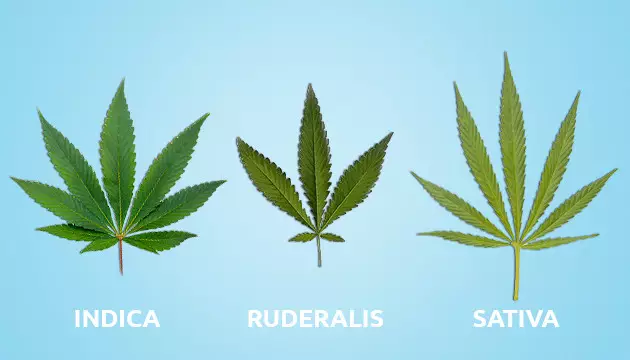
Autoflowering cannabis is a cross-breed between either the plant Cannabis Sativa or Cannabis Indica and Cannabis Ruderalis. Cannabis Ruderalis is a subspecies of marijuana that hails from the regions of Central Asia, Siberia, Russia and Eastern Europe. Ruderalis adapted to survive in harsh climates where Sativa or Indica normally would not; Ruderalis is also able to produce flowers regardless of its light intake. Ruderalis comes from the Latin root ‘rudus’, meaning “rubble” – a suitable name for a plant that can survive and produce flowers almost anywhere it grows. Similarly, thanks to such parentage, autoflowering cannabis is sturdy and can start flowering independently from its light schedule.
Benefits Of Growing Autoflowering Cannabis
Autoflowering strains have several benefits that make them preferable for many growers when compared to photoperiod strains. In addition to their abilities to grow in virtually any type of environment at any time of the year, there are numerous other factors that make autoflowering marijuana a favorite for growers.
Unparalleled Discretion

One of the benefits of autoflowering marijuana is its smaller size. Autoflowers provide discretion to growers by being able to grow in confined spaces, on balconies or in home gardens, as they typically don’t surpass a height of 60-100 centimeters (about 24-39 inches). These smaller plants are perfect for those who want to keep their growing discreet have limited space.
Fast-Forwarded Growth

Autoflowering strains progress at a much quicker pace than photoperiod plants. Autoflowering strains will complete their entire growth cycle in the time it takes for a typical photoperiod plant to finish flowering alone, which is anywhere from 7 to 10 weeks. Because they can produce multiple harvests per season versus a photoperiod strain, autoflowers are great for those who are a bit impatient about producing cannabis and want to see quick results.
Resistance Power Of Autoflowers
Autoflowering weed is also excellent at repelling a multitude of common issues often seen with photoperiod strains. If you look at photoperiod versus autoflowering strains, the latter are better suited to resist mold, pest infestations, and the common problems associated with overfeeding or underfeeding your plants. This is due to the fact that Cannabis Ruderalis has adapted to growing in harsher climates with temperamental conditions.
How Much Light? Not That Important Anymore
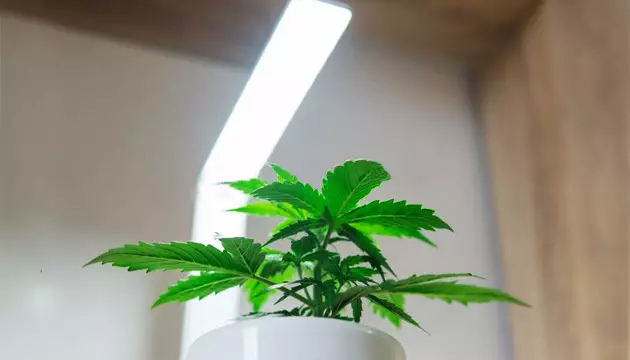
Because autoflowering cannabis starts producing buds independently from the daily light intake, you won’t need to adhere to a strict lighting schedule for your plants to enter their flowering phase. Instead, you can abide by a variety of different lighting schedules that are more dependent on the yield you wish to obtain. Autoflowering strains are also not susceptible to disruption from light pollution (street lamps, indoor lighting, etc.), as they’re designed to grow regardless of the amount of light they receive.
Save On Feeding
Another benefit of autoflowering cannabis is that they don’t need to be fed as often and as much as other plants, which can ultimately save you money on fertilizers and nutrient supplements. Autoflower strains are small in size and mature rather rapidly, so they don’t require the same amount of nutrients to flourish as other strains would. Be sure to feed them lightly, even though autoflowers can handle the damages taken from overfeeding if stopped once the first signs of this are spotted.
Higher CBD Percentage

Autoflowering strains are also typically higher in CBD than photoperiod strains. Many people prefer autoflower strains for their high levels of CBD and its medicinal benefits, in addition to their ability to induce a sense of clear-headedness and lucidity. This is definitely dependent on personal preference, but if you’re looking to grow weed that’s higher in CBD, autoflowers will likely be your go-to cannabis type.
Downsides Of Growing Autoflowering Cannabis
Though we have seen there are many benefits to growing autoflowering cannabis, it also has its downsides. Autoflowers will not perform as well or give fruit for as long as their photoperiod counterparts; here, we will see exactly what might make you reconsider purchasing autoflowering seeds.
Not Enough Bang For Your Buck
One of the cons of growing an autoflowering strain is the low yield you’ll receive from your plant. This is due to the small size and the short lifecycle of autoflower plants; they simply don’t have enough time to reach the heights of your typical Cannabis Sativa or Cannabis Indica for you to gain a larger yield of bud. The yield of an autoflower could be enough for personal use, but if you’re looking for a larger yield from your plants, it would be best to try your hand at photoperiods.
Lower THC Levels

Another downside of growing autoflowers is that they’re typically lower in THC than photoperiod strains. First, the buds of your autoflower strains don’t have as much time to mature and must be harvested earlier than many of their Sativa or Indica counterparts, and therefore cannot produce higher levels of THC. Second, their genetic heritage includes Ruderalis, which is notorious for producing low to no high. However, there are always new autoflowering strains being developed, so it’s now possible to find strains higher in THC than in past years.
Merciless Electricity Costs
Depending on how you choose to grow your autoflowers, you may be faced with high electricity costs. Because your autoflowers will produce buds regardless of its lighting schedule, when growing indoors, the lights can be left on your plants for a straight 24 hours without damaging the plant, which will cause the plant to reach its flowering state faster. Even when left on an 18 on/6 off lighting schedule, you can still be faced with high costs of electricity to grow your plants indoors.
No Chance Of Training Your Autoflowers
Because autoflowering strains don’t have much time to recover from stress due to their short cycle, they’re not very suitable for training. High-stress training will only lower the yield of your plant and can even cause permanent damage to its integrity. While low-stress training is also not ideal, this is the only suitable option if you’re interested in training your plant; autoflowers don’t produce a large canopy, so LST can help your plant develop a larger canopy by encouraging the growth of smaller branches.
Can’t Be Cloned
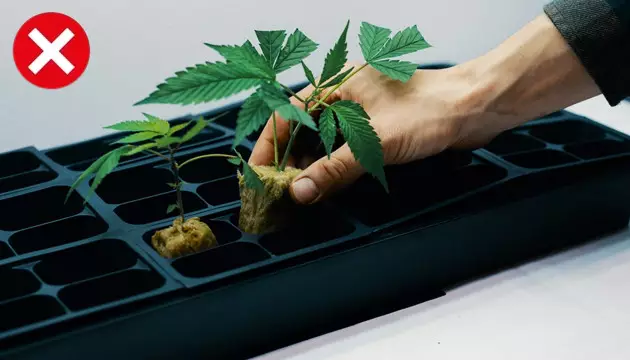
If you’re growing cannabis and get really attached to a particular strain, whether for its ability to grow fast or the quality flower it produces, you may want to take a clipping and grow another, identical plant. However, because the lifespan of an autoflower is so short, any attempt in cloning your autoflower will only result in an underdeveloped plant that won’t even reach the end of its flowering phase before its life is over.
The Best Tips For Successfully Growing Autoflowers
Whether you have experience in growing photoperiod strains or not, autoflowering strains require a certain type of care that differs from a typical photoperiod strain. Follow these tips to ensure that you correctly care for your autoflowers.
Just Right: Don’t Overfeed Your Autoflowering Plants
Although autoflowers are quite resilient when it comes to resisting many threats that can afflict cannabis, it’s highly important to keep an eye on one of the main enemies of autoflowering strains: overfeeding. Autoflowers, because of their size and lifecycle, do not require as much nutrients as photoperiod strains. In this case, overfertilizing your plants can cause damage to the plant, negatively impact its yield, and even potentially kill it.
Colas First! Harvesting Your Buds Correctly
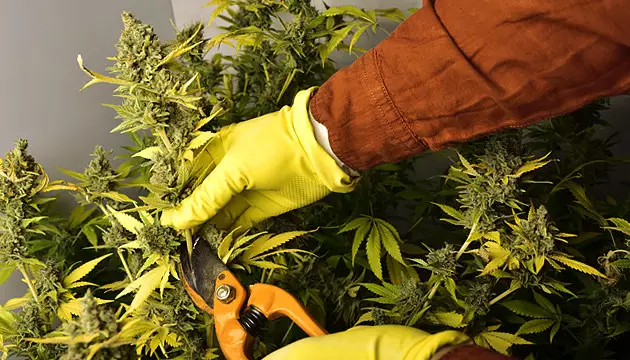
The vegetation phase of your autoflower is so short that it typically doesn’t have enough time to develop a fruitful canopy for your buds. It’s therefore important to harvest your buds gradually, starting with the colas first, as they will have had the most time to develop. Your buds lower down the tree will need more time to develop and accordingly need to be harvested last.
Preparing Your Next Grow Ahead
If you’re enjoying your autoflowering plants, you can already prepare your next crop before your autoflowers have finished their cycle. Procure your seeds before you harvest your current plant to ensure there are no gaps between growth cycles. You can prepare your next crop while harvesting your current plant and, due to the speed of an autoflower’s growth, have a consistent source of cannabis.
Autoflowering Strains – Best Choice For Beginners
Autoflowering strains are the best choice for beginners who have never grown a marijuana plant before. Autoflowers are very forgiving when it comes to common mistakes made by beginners and can be used as good practice for those who want to get further into growing. Autoflowering weed is also great for those who want to produce small yields in a timely manner, or to have a more discreet growing experience.
Autoflowers – They Might Be Just For You
Now that you understand what autoflowering cannabis is and the pros and cons of using autoflowering seeds, you can be much more informed when it comes to choosing the type of seed you wish to grow. Autoflowering strains have several downsides, but you may find that their pros outweigh the cons in their ability to produce marijuana frequently, at any time, in a short amount of time. Even though it depends on your desires from your personal marijuana growth, you may find that autoflowering strains are perfect for your needs.
Herbies Head Shop expressly refuses to support the use, production, or supply of illegal substances. For more details read our Legal Disclaimer.


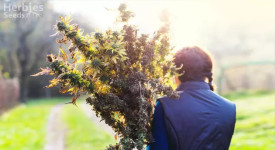
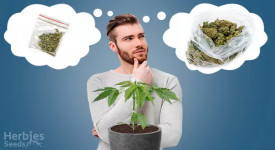


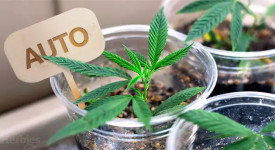
Thank you for leaving a comment for us!
Your feedback will be posted shortly after our moderator checks it.
Please note that we don’t publish reviews that: